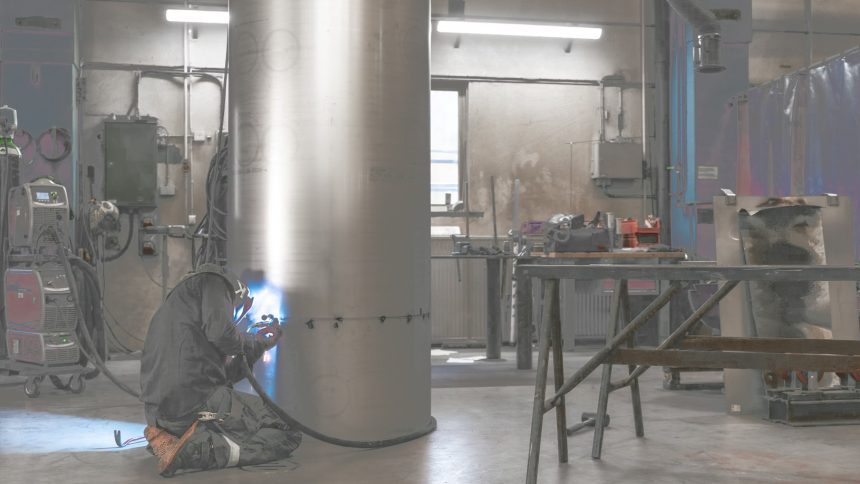Aluminum, an extraordinary and unparalleled metal, boasts a myriad of advantageous attributes that render it a prime choice for diverse projects. Given its exceptional properties, the practice of Tungsten Inert Gas (TIG) welding on aluminum is not an uncommon occurrence.
Aluminum is a difficult material to weld. Here is a guide covering all the major aspects of TIG welding on aluminum.
Welding Town
Suggested Voltage
Understanding the Impact of Voltage in TIG Welding on Aluminum
Voltage in TIG welding plays a pivotal role as it directly influences the heat produced by the arc. A higher arc voltage translates to greater power transferred to the workpiece. However, determining the ideal voltage for TIG welding on aluminum is not a straightforward task as it depends on various factors.
To initiate the arc, typically, you require a voltage slightly above 60 Volts along with high frequency. However, when using higher currents, it becomes challenging to maintain high voltage simultaneously. There is a maximum limit to the voltage based on the amount of current being used. As a result, it is best to commence with a lower to medium voltage setting and then adjust accordingly.
Calibrating the voltage appropriately is crucial to achieve the desired heat input and weld quality in TIG welding on aluminum. Welders must find the right balance between voltage and current to create stable arcs and produce high-quality welds on this versatile metal. By understanding and managing voltage effectively, welders can control the welding process and achieve precise and satisfactory results.
What Gas Should You Use
Significance of Shielding Gas in TIG Welding on Aluminum
Shielding gas is an indispensable element in TIG welding, as it prevents the welding pool from being contaminated by the surrounding air. The choice of shielding gas is a critical aspect, and using the right gas can offer several advantages, aiding in arc control and enhancing the properties of the weld pool.
In TIG welding, commonly used gases include Argon, Helium, and carbon dioxide. However, it’s essential to note that not all of these gases are ideal for aluminum welding. Let’s explore the suitability of these gases for TIG welding on aluminum:
Argon: Argon is the most frequently used shielding gas for TIG welding on aluminum. It offers excellent weld pool protection and facilitates superior arc stability, making it an optimal choice for most aluminum welding applications.
Helium: Helium, when used in a mixture with Argon, can be beneficial for specific aluminum welding scenarios. It contributes to a hotter arc, enhancing weld penetration and increasing travel speed. However, Helium is often used in combination with Argon to maintain arc stability.
Carbon Dioxide: Carbon dioxide is not typically used as a shielding gas in TIG welding on aluminum. Its usage is more common in other welding processes, such as MIG welding.
In addition to these gases, welders may encounter various gas mixtures tailored to specific welding requirements. Nonetheless, for TIG welding on aluminum, the primary choice is Argon, either used alone or combined with Helium in specific situations. Properly selected shielding gas can significantly impact the welding process, ensuring cleaner and higher-quality welds on aluminum.
Is Argon a Good Option
Optimal Shielding Gas for TIG Welding on Aluminum: Pure Argon
When it comes to TIG welding with aluminum, pure Argon emerges as the best choice to consider. For the majority of aluminum alloys, using Argon as the shielding gas poses no issues and delivers exceptional results. As a heavy inert gas, Argon enables the creation of robust welds while remaining a more cost-effective option compared to Helium. Moreover, once the weld seam cools off, the properties of the weld will be excellent.
I strongly advise using pure Argon canisters for TIG welding on aluminum. By opting for this shielding gas, you’ll not only achieve high-quality welds but also save valuable time during the welding process. Embracing pure Argon as the shielding gas of choice ensures efficiency, reliability, and excellent weld characteristics for your aluminum welding projects.











